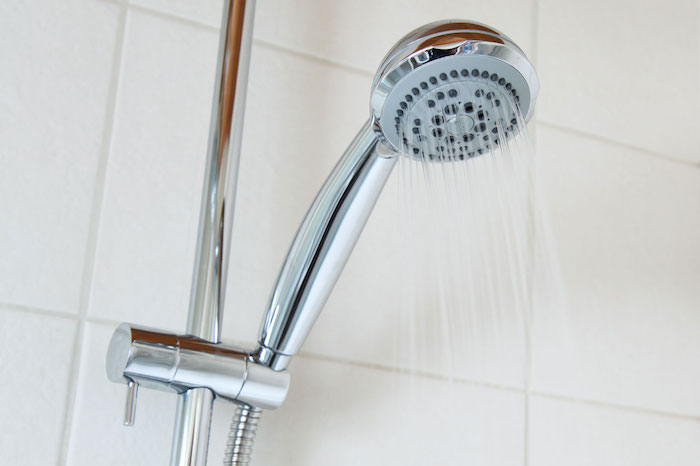How to Wash Shower Curtain Liner in Front Load Washer
We understand you are a clean person. However, from time to time your shower curtain liner is bound to grow molds, mildew and finally be disgusting. In such cases, it is common for you to avoid touching it and it can make your visitors uncomfortable. So how do you avoid such embarrassing scenarios? We have you covered with the best options.

Can you wash your shower curtain line in a front load washer? Yes, you can, if anything it is the easiest yet most efficient way to clean your shower curtain liner. To start, since front load washers have no agitators, just toss your liner in the washer. Add some detergents and half a cup of white vinegar. Use warm water to run the front loader and when you are done, hang the liner in the shower to dry. With this simple process, you can get your liner looking as fancy as it was originally.
This article will look into how to clean you shower liner using a front load washer, and factors that make front load washer the best option for cleaning curtain liners. We will also highlight how to use a top loader for cleaning shower curtain liners, tips on cleaning shower curtain liners, how to keep liners clean, factors to consider when buying a liner and other shower curtain liner related questions. Keep reading to find out more.
Procedure for Washing Shower Curtain Liner in Front Liner
The procedure mentioned above is a simplified process. The following is a detailed step-to-step procedure for cleaning your curtain liner using a front loader
- Remove the shower curtain liner from the rod. Make sure all the rings and hooks have been removed.
- Fill the Loader with warm water at the most suitable level
- Add a normal amount of detergent and add ½ cup of baking soda.
- Run the front loader as normal
- When rinsing, add about ½ cup of vinegar
- If the shower curtain liner is made of plastic material, remove it as soon as the loader is done to avoid forming wrinkles
- Hang the liner in the shower for it dry
- If the shower curtain liner is made of fabric, run it through the spin cycle to get rid of excess moisture
- Hang it to dry
Why the Front Loader is the Best Washer for Shower Curtain Liners
There are two types of washing machines, the Front loader washer and the top Loader washer. Ideally, the front loader washer is the best alternative. This is because it does not have an agitator. As such, it uses less water and less energy to clean more efficiently.
Narrowing down to shower curtain liners, the front loader is best because it does not have an agitator that can shred your plastic liner. As such, unlike with a top loader, you will not have to follow a procedure while cleaning neither will you have to monitor the washer closely. Other than that, you do not have to risk your plastic shower curtain liner being shredded.
Can You Use a Top Loader to Wash your Shower Curtain Liner?
Although it is not recommended, it is a viable option when a top loader is all you have and hand washing does not appeal to you. The process of using a top loader is just like the process of using a front loader. However, you will have to make certain adjustments.
First, when placing the liner in the washer, add a few more towels or clothes that you were looking forward to cleaning. Place the towels around the agitator’s fin and place the shower curtain liner close to the outer edge of the washer’s drum.
The towels create a buffer around the top loader’s agitator to keep it from shredding your curtain liner. The towels also provide that scrub for extra cleaning.
Second, even with the above guild line, you will have to monitor your top loader washer closely so that you can remove the shower liner in time without creating a mess.
Tips on Cleaning a Shower Curtain Liner
The following are tips you can adhere to when washing your Shower Curtain Liner to achieve the best results.
- Check if your liner is made of waterproof fabric. If it is, follow the instructions on the product label. This is because detergents or bleaches such as chlorine can damage the waterproof properties of the fabric or cause it to fade.
- To get rid of the excess mildew for white or clear curtain shower liners, add a cup of bleach to the detergent.
- For colored liners, use color-friendly bleach such as Clorox 2 or OxiClean.
- If you have stubborn mold and mildew stains, you can use a solution of baking soda, vinegar, water and an extra detergent. The Baking soda adds abrasiveness during the washing cycle as the detergent gets rid of the mold and mildew. Vinegar is used during rinsing since its acidic properties help to fight stubborn stains and provide a more sparkling result.
- Alternatively, you can use a normal mold or mildew stain remover like the CIF
- Do not mix vinegar and bleach. Although the two work efficiently when used individually, mixing them is a bad idea. A solution of vinegar and bleach produces chlorine gas which is a toxic gas to humans and can lead to deadly consequences.
- You can use an old toothbrush when hand washing to remove the stubborn stains.
- Avoid using bar soaps since most of them have scum that remains on the shower curtain liner after washing. You can use detergents, body wash or non-soap cleansing bars as substitutes.
- Adding a fabric softener to your plastic shower curtain liner may damage the fabric. Therefore, avoid using may softeners.
- Do not use cold water for plastic shower curtain liner. Coldwater causes the plastic liner to become brittle and hence making it susceptible to shredding when placed in a top loader washer.
- Moreover, warm water is best to help you get rid of the molds more efficiently and faster.
- When cleaning your shower curtain liner, clean your entire shower as well. This helps to get rid of the mold and mildew in the shower that if let to exist, they can easily grow back to the shower curtain liner.
- Do not take your liner through the drying process since the heat emitted can melt the entire plastic shower curtain liner.
- It is recommended you use a front loader washer for your shower curtain liner and not the top loader washer.
- Avoid using excess detergents or too little detergents for any type of washer. Excess detergents can cause oversuding, produce excess lather, while too little can prevent efficient cleaning.
How to Keep Your Shower Curtain Liner Clean

Now we have all the necessary tips for cleaning your shower curtain liner. The most efficient way is to maintain them in a clean state. The following are ways through which you can ensure your shower curtain liner remains clean for as long as possible.
- Make sure the curtain does not bunch up on the floor of the shower or tub. In case the shower curtain liner is too long and is in contact with the shower floor, you can place the rod at a higher level. If that is not an option, make efforts to trim the part of the liner that is in contact with the shower.
- When trimming, use a sharp pair of scissors to obtain the best results and consistency.
- After you showering, close the curtains to ensure it airs properly and subsequently dries up efficiently.
- Ventilate the room for about 15-30 minutes after showering. You can do this by opening a window or using a fun in the shower.
- Make it a daily routine to clean the shower curtain liner with a solution of half water and half-white distilled vinegar. Since the vinegar has a pungent smell, you can control the smell by adding lemon to the solution. Do not bother rinsing the liner since the next showing session will rinse off the solution
- Make a habit of scrubbing the bottom of the liner with a mix of water and vinegar. This will help to remove any buildup that you may have missed in your daily cleaning routine.
Related Article: 5 Best Shower Curtain For Walk In Shower
Factors to Consider when Selecting a Shower Curtain Liner
There are several types and sizes of shower curtain liners. Your choice depends on your taste. However, the following are key factors you should consider when buying your shower curtain liner.
- Material- shower curtain liners are made of two main material fabric and vinyl. Each of the materials has its advantages.
For instance, the vinyl material is best when you are preventing any leakages outside the shower. However, it is made of a heavy material that may take longer to dry as compared to that of a light fabric. This exposes it to the easier formation of molds and mildew.
- Size- Most liners ate usually 72*72 inches in size. That said thou, it is recommended you take the measurements of your bathroom first before purchasing a liner
- Magnetic Bottom- choose a liner with a magnetic bottom to prevent it from moving as you take a shower. Also, some liners have holes that enhances the ability to withstand tear and wear. For such liners do not place them in a washing machine rather you can hand wash them
- Color-When choosing the color of your shower curtain liner you can match it with the color of your bathroom. However, if your bathroom is small, you can go for light color and if it is large darker colors will do.
Related Questions
How often should you wash your shower curtain Liner?
As mentioned above, the most efficient way to keep your shower curtain liner clean is by washing it daily. However, due to day-to-day routines, this may mostly be impossible. As such, it is recommended you wash your liner once a month.
If this is still not possible, the liner should not go for a maximum of 3 months without being washed.
Can I hand wash my shower curtain Liner?
If you are not in a position to access a washer, you do not have to panic. Yes, you can hand wash your liner.
To do this, take a microfiber cloth and place it in water containing baking soda. Allow the cloth to sit on the water for some time for it to dampen.
When you are satisfied it is dump, use the cloth to scrub the shower curtain liner and remove any grim. Rinse the liner by wiping it down with a different cloth damped in some warm water.
If the liner has stubborn stains, dampen a sponge with baking soda and use the sponge to scrub off the stains. Always make sure you rinse the liner before allowing it to dry. If not traces of soap and stains will form print s on the liner.
Related Article: How To Clean Plastic Or Vinyl Shower Curtains

